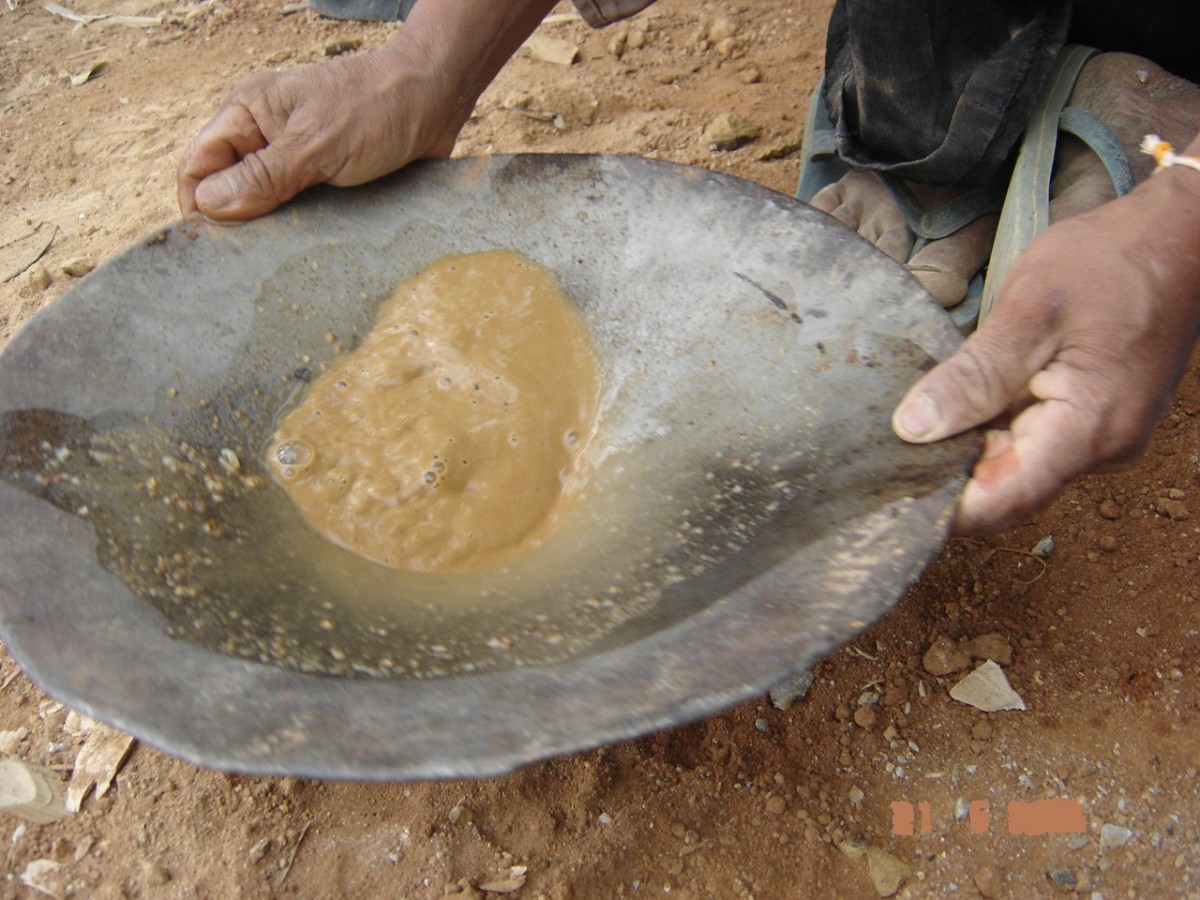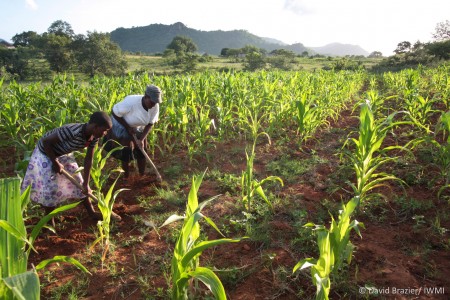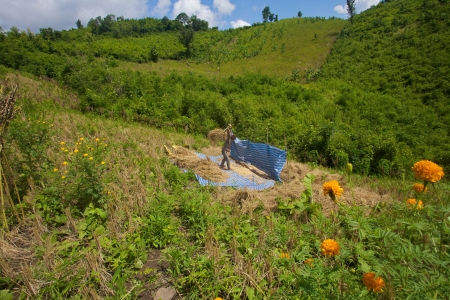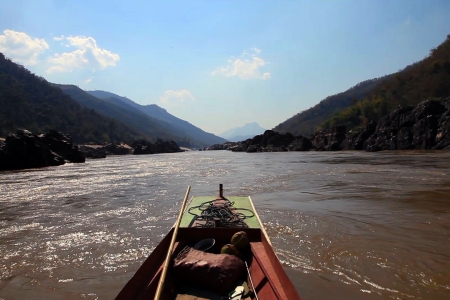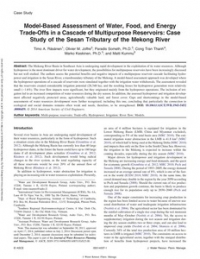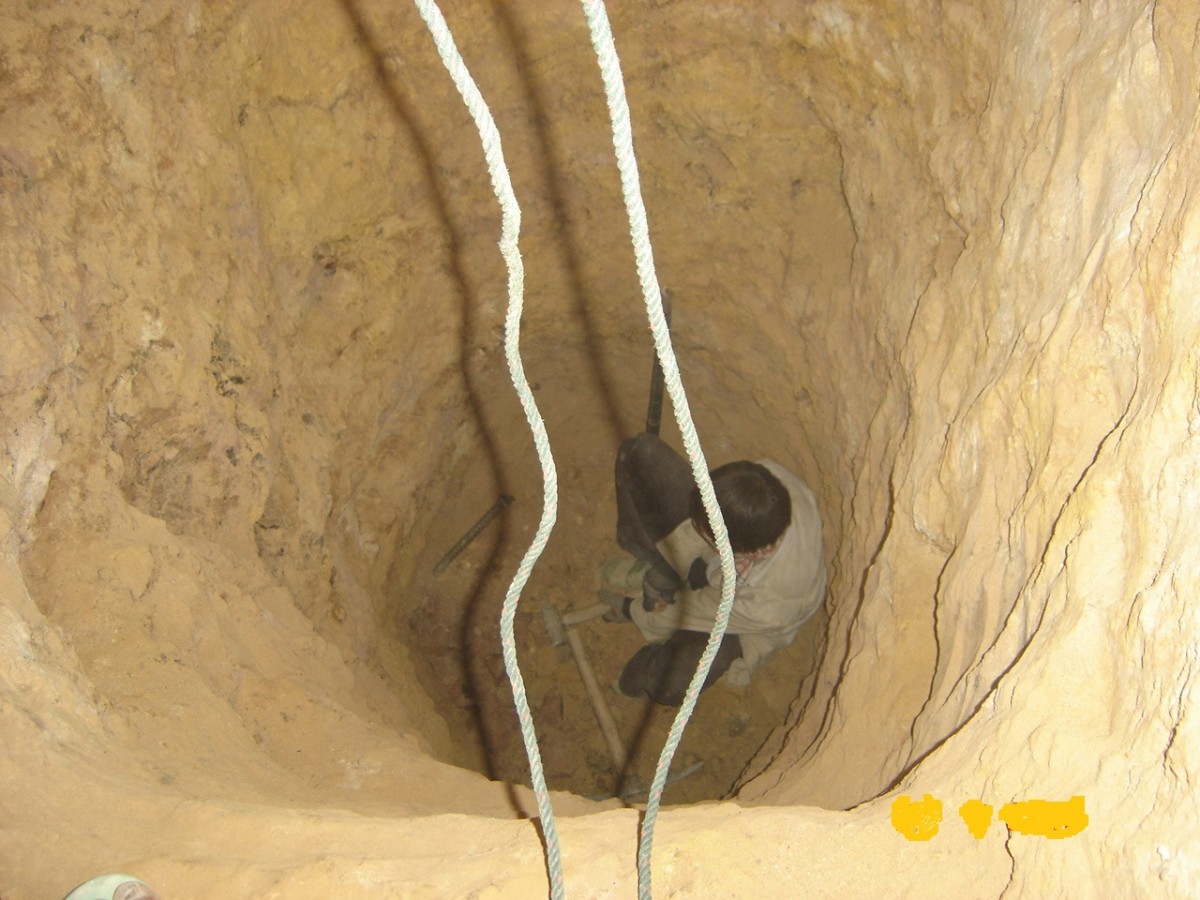
Over the last decade, Laos and Cambodia have seen a sharp increase in private investment, particularly in the resource sector.[1] Mekong region governments have strategically promoted foreign direct investment (FDI) under the assumption that FDI can bring prosperity and development opportunities to their countries. But does FDI benefit all?
Many of the Mekong governments have pursued three larger socio-economic goals: (1) promote economic growth, (2) poverty reduction, and (3) sustainable use of natural resources. Clearly, FDI directly contributes to the first goal, enabling projects that range from small-scale businesses (e.g. trading fish) to large-scale development projects (e.g. hydropower); however, FDI in the resource sector is often at odds with the third goal, often exploiting the same resources that sustain local livelihoods.
Moreover, while economic growth could in theory provide the needed resources to reduce poverty, the first does not automatically result in the latter. Our understanding of the impacts of FDI on poverty reduction is limited, and certainly varies from place to place. Therefore, it is necessary to ask: to what extent does the current economic growth spurred by FDI improve people’s livelihoods in general, and how does it improve the livelihoods of those directly affected by development projects?
What is the impact of FDI?
As part of the Governance, Gender and Poverty theme at the International Water Management Institute (IWMI), we are conducting three concurrent pieces of research to build a better understanding of private sector actors in the resource sector in the Mekong region.
The first piece of research assesses the Lao Government’s incentive policy to promote private investment, and how this links to poverty reduction. We find that decisions made by private investors do not necessarily match the Government’s development objectives of linking FDI with poverty reduction and resource management.
Despite Government incentives to invest in poor zones, most companies have invested in non-poor zones where resources and economic infrastructure are available. For these companies, turning the greatest profit is of higher importance than developing poor zones or exporting the goods promoted by the Government, even when they could get a tax exemption for the latter.
While FDI in Laos has contributed to national revenue and economic growth, it is often at the expense of both natural resources and local livelihoods. Based on our case study at Phu He mining zone in Pek district, Laos, we find that local water and land resources were degraded and that this resource degradation has hurt local livelihoods, which depend closely on these resources. Moreover, mining activities have also triggered artisanal mining practices by local communities and thus changed the notion of local governance entirely. As local villagers participate in mining activities as a means to increase household income, village authorities are faced with a moral struggle to stop such activities.
Consultation with local communities has been absent in the Phu He mining zone, and we argue that such consultations are vital to the shaping of investment decisions. Another issue lies in the lack of engagement with the provincial and district governments. While these local levels of government are responsible for monitoring and evaluation, they may only be informed when local villagers encounter problems. In the case of Phu He mining zone, the national government granted the land concession without consulting provincial and district government officials. Further, local authorities often lack the technical ability to analyze and prove the negative impacts of private investment.
Our second case study examines the implications of rubber investment and associated land concessions in Sesan district, Cambodia. Similar to our findings in Laos, the rubber company neglected to conduct any local consultations; local authorities lack the necessary company information and governance capacity to monitor rubber-planting activities and properly manage local resources. Low local capacity resulting in weak resource governance led the rubber company to exploit local forest, land, and water resources for their rubber plantations without considering local livelihoods. With limited access to local resources, the surrounding community struggles to improve or adapt their livelihood strategies.
Our evidence shows that current private investment policies of the Mekong governments are effective only for economic growth and that there is not a clear link between economic growth and poverty reduction. How can we ensure that FDI is better aligned with poverty reduction?
Proposed solutions
In a situation where a national government lacks the capacity to manage and oversee Foreign Direct Investment, where local authorities are not fully involved in shaping investment decisions and lack the capacity to monitor and evaluate investment processes and outcomes, what can be done to ensure that large-scale investments are benefiting local development aspirations?
Our initial findings suggest that governments in the Mekong—and particularly in Cambodia and Laos—should place greater emphasis on managing the negative externalities that FDI has caused in the region. Ensuring positive outcomes from private investment demands not only meaningful local consultation and good oversight of FDI, but also the ability of government to hold private sector development projects accountable for negative impacts created.
In Laos, the government has promoted the “Sam Sang” or “Three Builds” policy, which essentially calls for each level of government to implement government policy effectively (national, provincial, and district). For investments to be monitored properly, local authorities (provincial, district, and village governments) should have a meaningful stake in the overall decision-making process of investment approval, land concession agreement, and monitoring and evaluation.
Supporting the actual shaping of local consultation processes and outcomes could be seen as the first step in this direction. In Laos, the recent formation of the People’s Assembly at the provincial level provides an entry point by ensuring greater involvement and participation from local communities and by positioning these communities as an integral part of investment decision-making processes.
Additionally, the development of a monitoring tool which links the strategy and behavior of private investors with the government’s collection and distribution of funds (e.g. poverty reduction, health, and education) could help the national government to weigh the benefits of FDI.
There are no silver bullet solutions in dealing with complex challenges related to large-scale land acquisitions and investments. We would be interested in hearing from other experiences with policy and monitoring tools that help ensure such development projects are achieving objectives related to poverty reduction.
For a complete analysis of the first piece of research, see:
Keovilignavong, O., Suhardiman, D. 2016. Characterising private investments and implications for poverty reduction and natural resource management. Development Policy Review. (In press.)
___________________
[1] The World Bank, for example, based on the World Development Indicator, has reported a large increase in the volume of FDI in Laos from USD 33.9 million in 2000 to USD 720.8 million in 2014 as well as in Cambodia from USD148.5 million in 2000 to USD 1,730.4 million in 2014.
